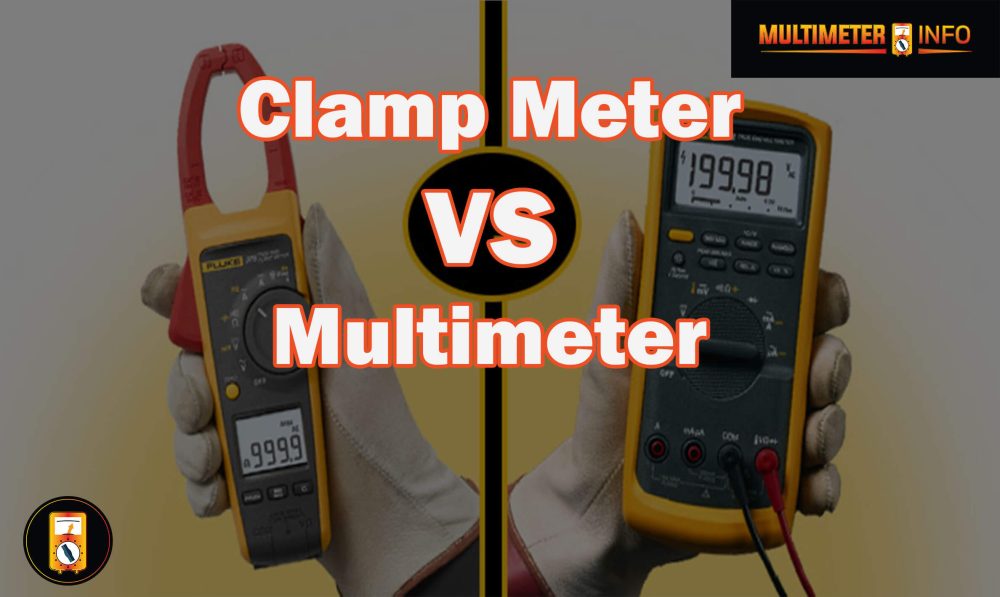Do you want to know how to determine whether or not an appliance has a neutral wire? Are you trying to figure out which wires in the outlet are hot, ground, and neutral? If that’s the case, this blog post is for you! It is not as difficult as it appears to use a multimeter to identify your electrical wires. With the simple steps, I’ll show you today, testing each of your connections doesn’t have to be confusing or dangerous. Prepare to be amazed at how simple it is to use a multimeter to determine which one is neutral!

What is a Neutral Wire?
A neutral wire is an electrical conductor that carries current back to the source to balance out the amount of electricity used in a circuit. It provides a direct path for electrical current to return from an appliance or light fixture to its power source.
The neutral wires usually have white insulation, and it is often referred to as a “neutral line.” This type of wire is typically found in 120-volt and 240-volt circuits, where it is necessary for providing a balanced load on the circuit.
In addition, the neutral wire is responsible for completing the circuit to allow electricity to flow. Without a neutral wire, an appliance or light fixture would not be able to operate correctly because the electricity wouldn’t be able to return to its source.
For safety purposes, it is important for homeowners and technicians alike to understand the purpose of a neutral wire and how it works within a home’s electrical system. An improperly wired neutral wire can cause serious damage and even fire hazards. Thus, proper installation of these wires should always be left up to qualified professionals who are trained in dealing with electrical systems.
TYPES OF WIRES:
Types of wires are essential to understand before beginning any electrical project:
Live Wires:
Live wires are the ones that provide electrical energy to appliances, lights, etc. They are usually colored red or black and have a much higher voltage than neutral wires.
Neutral Wires:
Neutral wires are used to complete the circuit and return the current back to its source. They generally have white or gray insulation and carry no load.
Ground Wires:
Ground wires help reduce shock hazards by providing an alternate path for electricity to travel in case of a short circuit or if there is any failure in the other parts of the electrical system.
These wires are typically insulated with green-colored insulation and connect directly to an earth-ground point, such as a copper rod driven into unamended soil.
Regardless of the type of wire, it is important to ensure that all electrical wiring is done according to safety standards. This includes using only the right materials, double-checking connections, and labeling all wires. Professional electricians should always be consulted when dealing with any kind of home electrical work. Doing so ensures that your home is safe and protected from power outages or other electrical hazards.
Find the neutral wire in your electrical system using a multimeter
Tools For Identifying Neutral Wire
When it comes to identifying a neutral wire in an electrical system, there are several tools you will need to ensure the accuracy of your work. These include:
A Multimeter:
A digital multimeter is an excellent tool for determining the current, resistance, or voltage of particular wires within the electrical system. It can also be used to help identify which wire is carrying a live current and therefore likely to be the neutral wire.
Appropriate Color Code Guide:
The color code guide for your specific electrical system will help you determine which colored wires correspond with different types of wiring. Knowing this information can assist with identifying which wire is likely to be the neutral one as some systems designate white wires for this purpose.
Voltage Tester:
A voltage tester checks any wire for the presence of an electrical current and can be used to identify which wire is carrying it. It will also tell you the level of power present in a particular wire, assisting with identifying the neutral wire.
Third-Hand Tool:
This third-hand tool is often used by electricians as an extra pair of hands. It consists of two alligator clamps at opposite ends of a heavy-duty spring, allowing you to hold wires securely while testing or working on them. This makes the identification of different wiring types much easier and safer than if done manually.
With the correct tools in hand, identifying a neutral wire in an electrical system should not be too difficult. Make sure to always follow safety procedures and double-check your work before connecting any wires. Doing so will ensure that you do not encounter any surprises while working on the electrical system.
Testing Neutral Wire with A Multimeter:
Testing for the neutral wire with a multimeter is a great way to make sure that your circuit is properly wired and functioning safely. Here’s how you can do it:
Set Your Multimeter:
Make sure that your multimeter is in the correct setting. When testing for the neutral wire, use either the resistance setting or diode test mode.
Locate the Wire:
To find your neutral wire, take off any switches or outlet covers and locate the bundle of wires coming into your switch box or outlet receptacle box.
Test Each Wire:
With your multimeter probes, touch one probe to each of the wires in turn until you find one that reads a very low – almost zero – resistance. This is your neutral wire.
Turn Off the Power:
Once you have found the neutral wire, make sure to turn off the power before doing anything else or working on the wires in any way.
Identify and Mark:
Visually inspect each of the other wires and identify them based on their color coding system if it is present. If not, mark each one with a permanent marker so that you can easily identify them in case they become disconnected later.
Double-Check:
When you’ve finished, double-check all your connections by testing for resistance once again to make sure that everything is wired correctly and safely before turning back on the power source.
Following these steps will help you correctly identify the neutral wire in your electrical system and make sure that your wiring is safe. If you are at all unsure of what you are doing, consult a professional electrician for help.
Using a voltage tester to identify neutral wires:
To identify a neutral wire using a voltage tester, begin by turning off the circuit breaker that controls the electrical circuit you’re working on. Once electricity to the circuit is disabled, ensure all components of the system are disconnected from any power source before proceeding:
- Verify the circuit is off by using a voltage tester to check that there is no power running through the wires. The voltage tester should read 0 volts when in contact with the wire if the electricity is off. It’s crucial to do this step before proceeding, as it’s possible for the system to still have electricity even if its breaker has been shut off.
- Strip back insulation from each of the wires carefully and sufficiently so they can be tested individually by the voltage tester.
- Check each of these exposed wires one at a time with a voltage detector, starting at one end of the set and working your way down until you identify which wire has 0 volts registered on your tester. This will be the neutral wire.
- Mark the neutral wire with a piece of electrical tape or other markers, to easily identify it in future work on the circuit.
- Once you’ve identified and marked the neutral wire, it is safe to reinstall the insulation and reconnect all components of the system safely before turning the breaker back on.
Always remember safety first when working with electricity! Be sure to always wear appropriate safety gear such as gloves and goggles, ensure that any electricity sources are completely disconnected before beginning your project, and never touch two wires at once while testing them with a voltage tester. Following these steps will help ensure your safety while identifying neutral wires safely and effectively using a voltage tester.
Frequently Asked Questions:
The neutral wire is generally identifiable by its color. It may be white, gray, or light blue. However, this is not always the case and it may be necessary to use a multimeter to identify the neutral wire within a black-colored cable.
A neutral wire is usually white or gray and will have a large diameter compared to the other live wires in your setup. An earth wire, on the other hand, is typically green and yellow with a smaller diameter.
Yes, the neutral wire carries current. It is responsible for carrying current back to the power source and helps to establish control over the voltage. Neutral wires are usually identified by their white color and are connected from the transformer back to the power source. To identify a neutral wire in an electrical connection, you will need a multimeter.
Final Note:
After identifying the neutral wire, always make sure to double-check your findings with a non-contact voltage tester to ensure accuracy. Additionally, remember that if you are unsure or uncomfortable when dealing with electrical wiring and components, it is best to consult a qualified electrician before proceeding. With the right tools and a bit of patience, you can use a multimeter to identify the neutral wire in any electrical system.




